
 Swipe
Swipe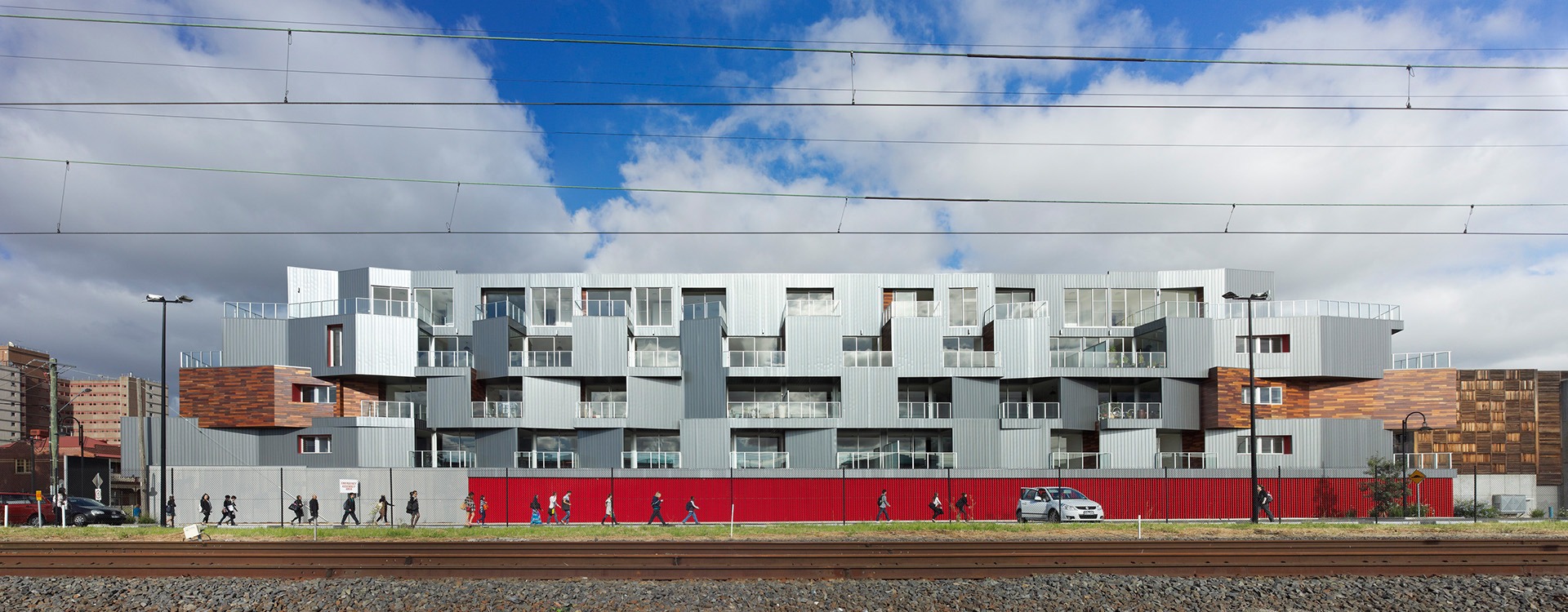
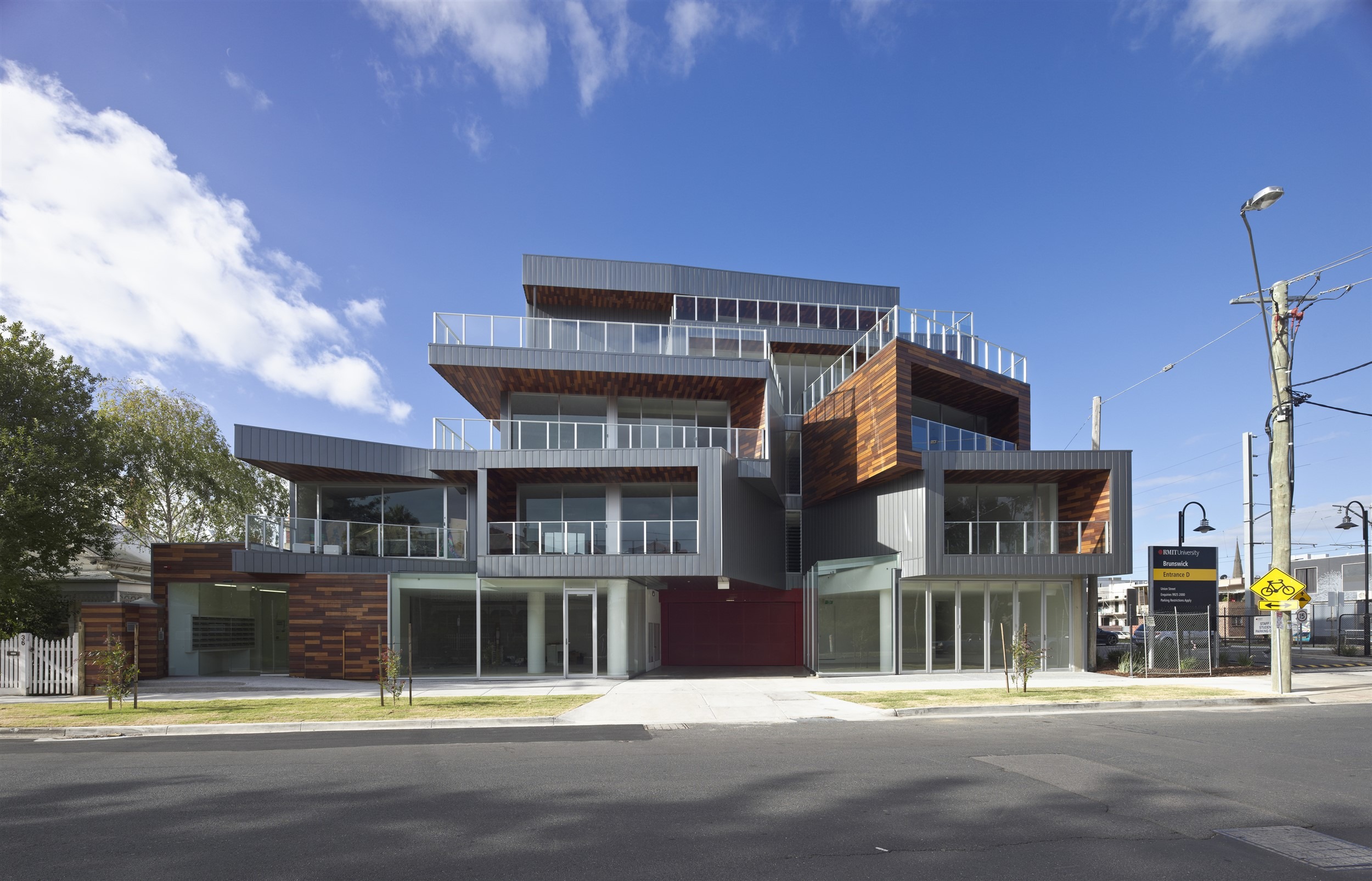
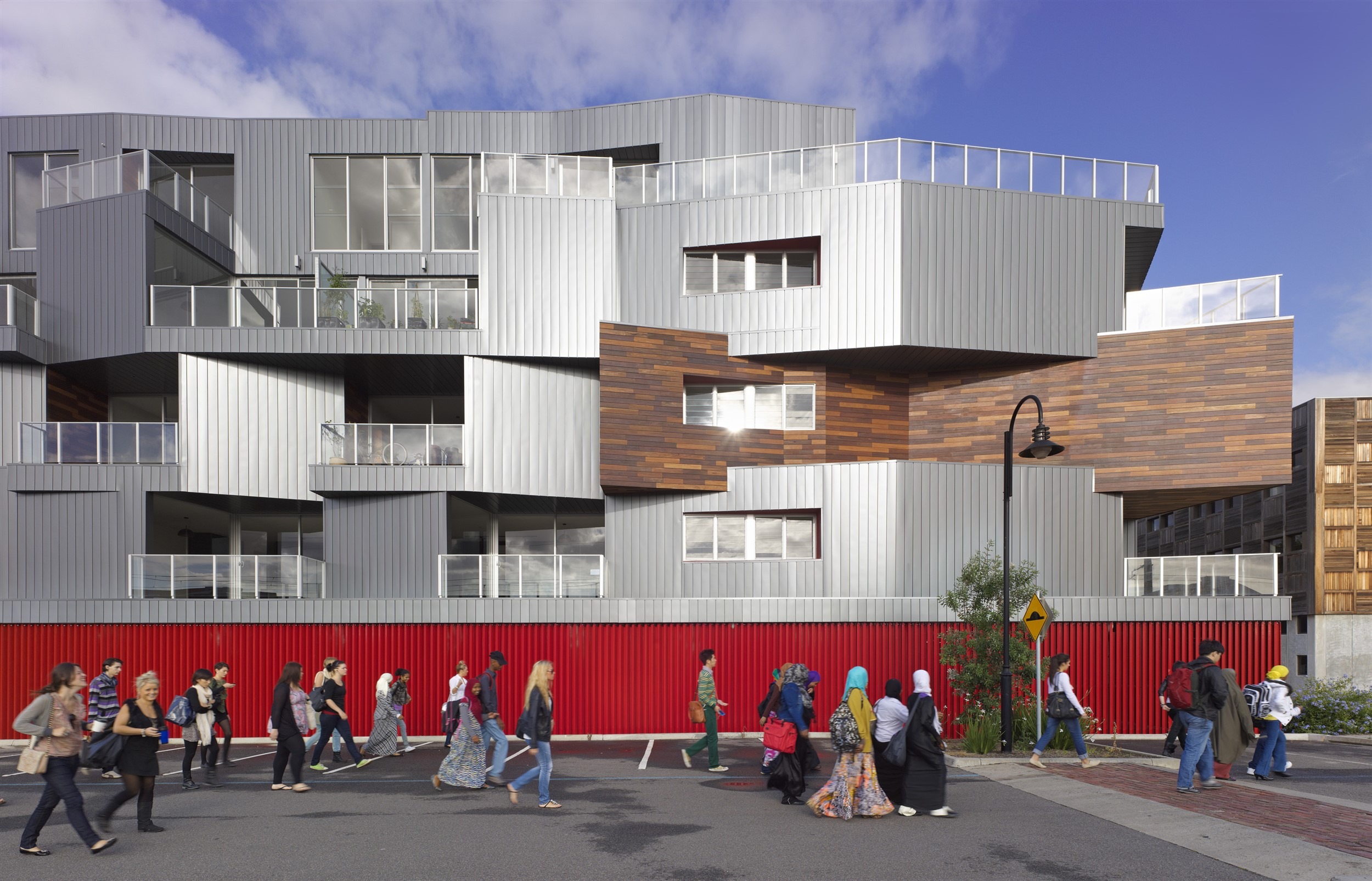

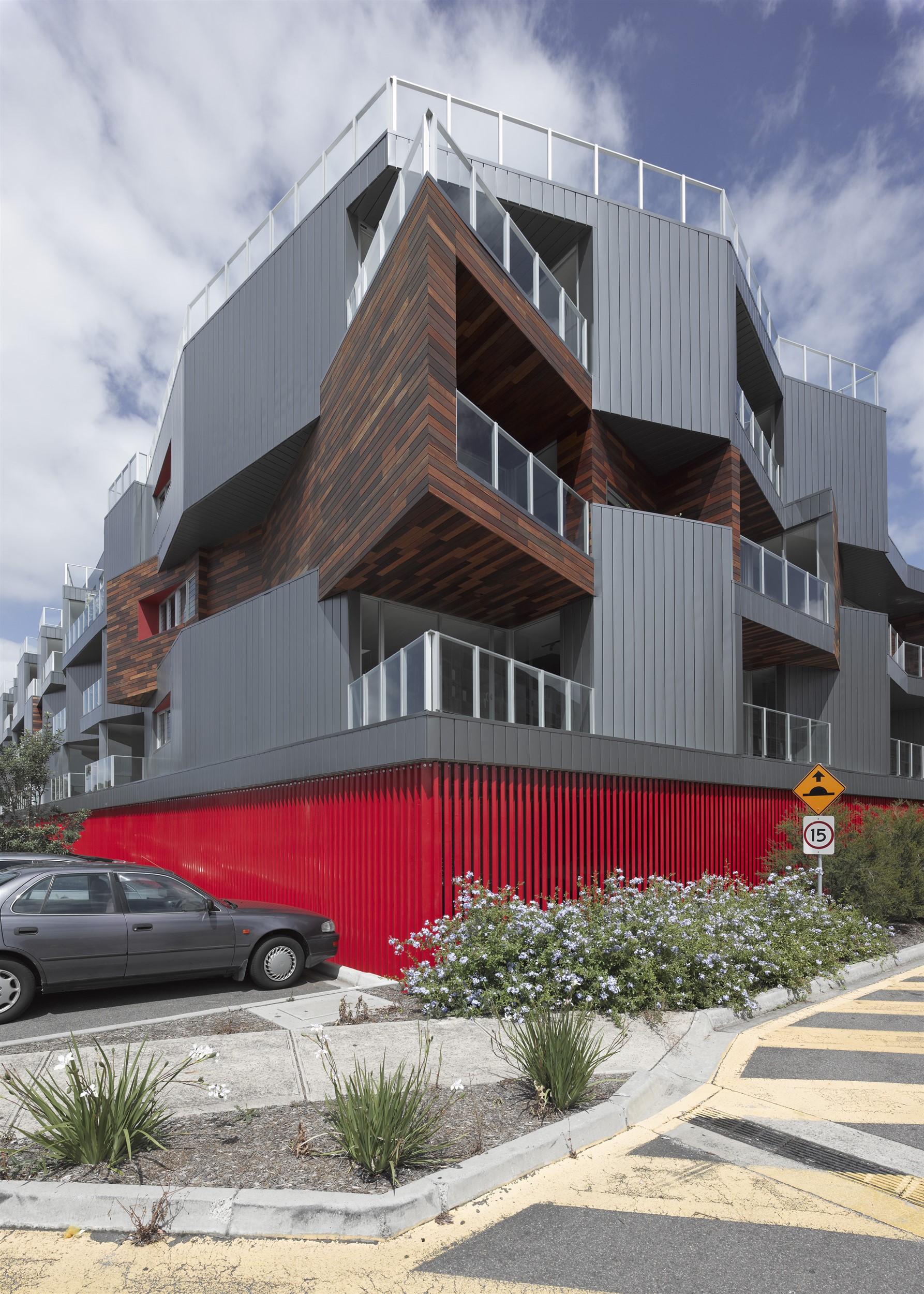

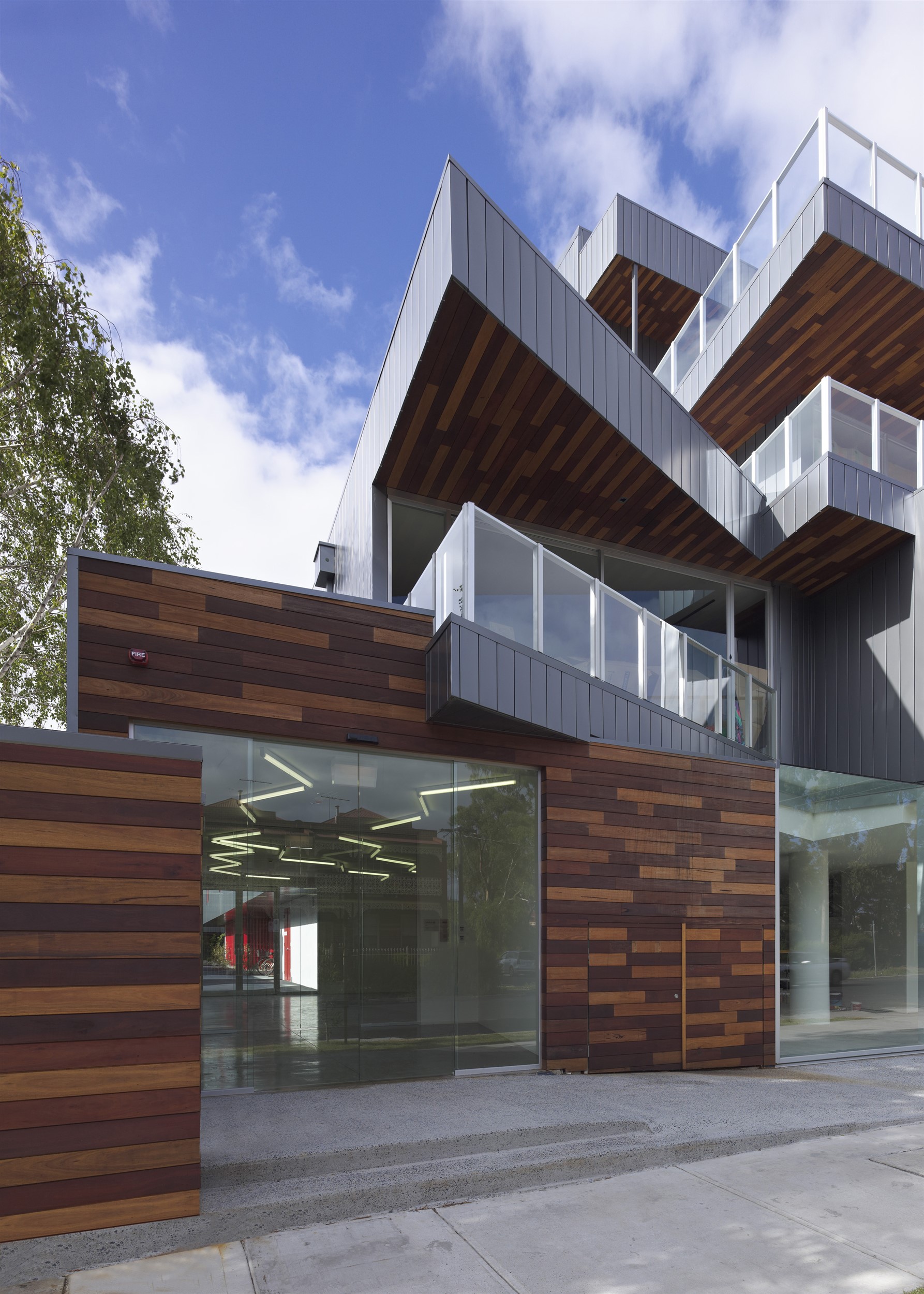
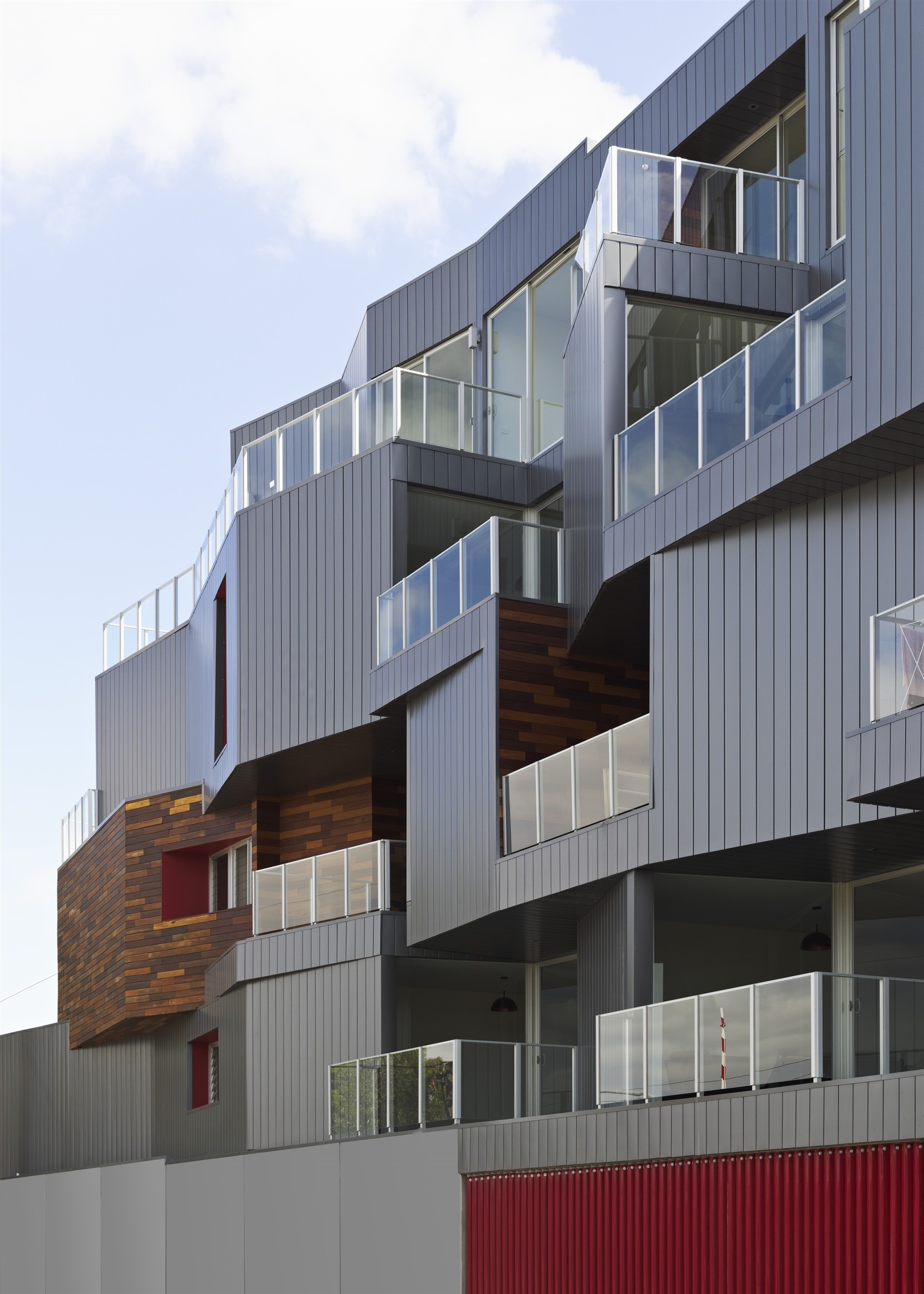
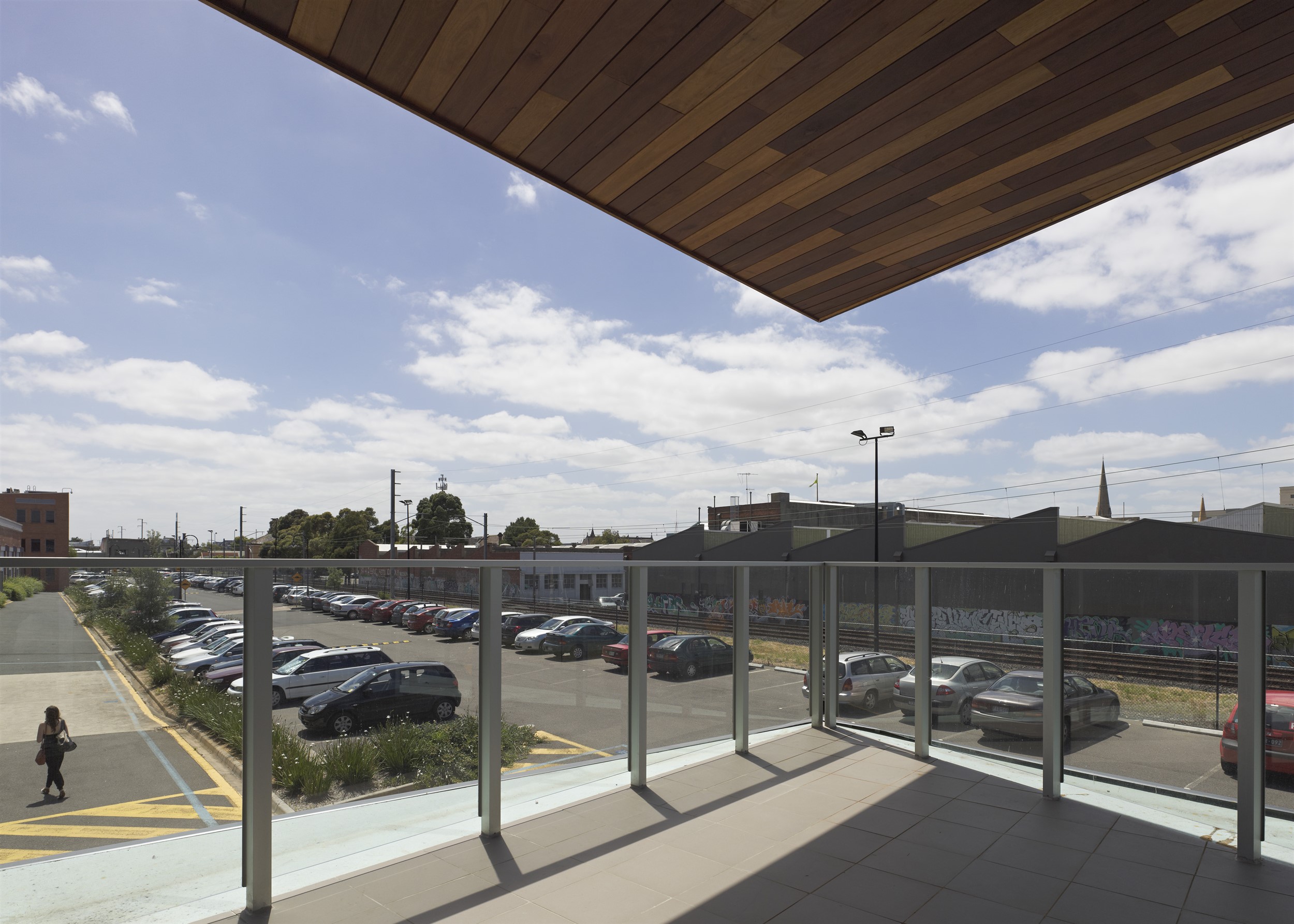

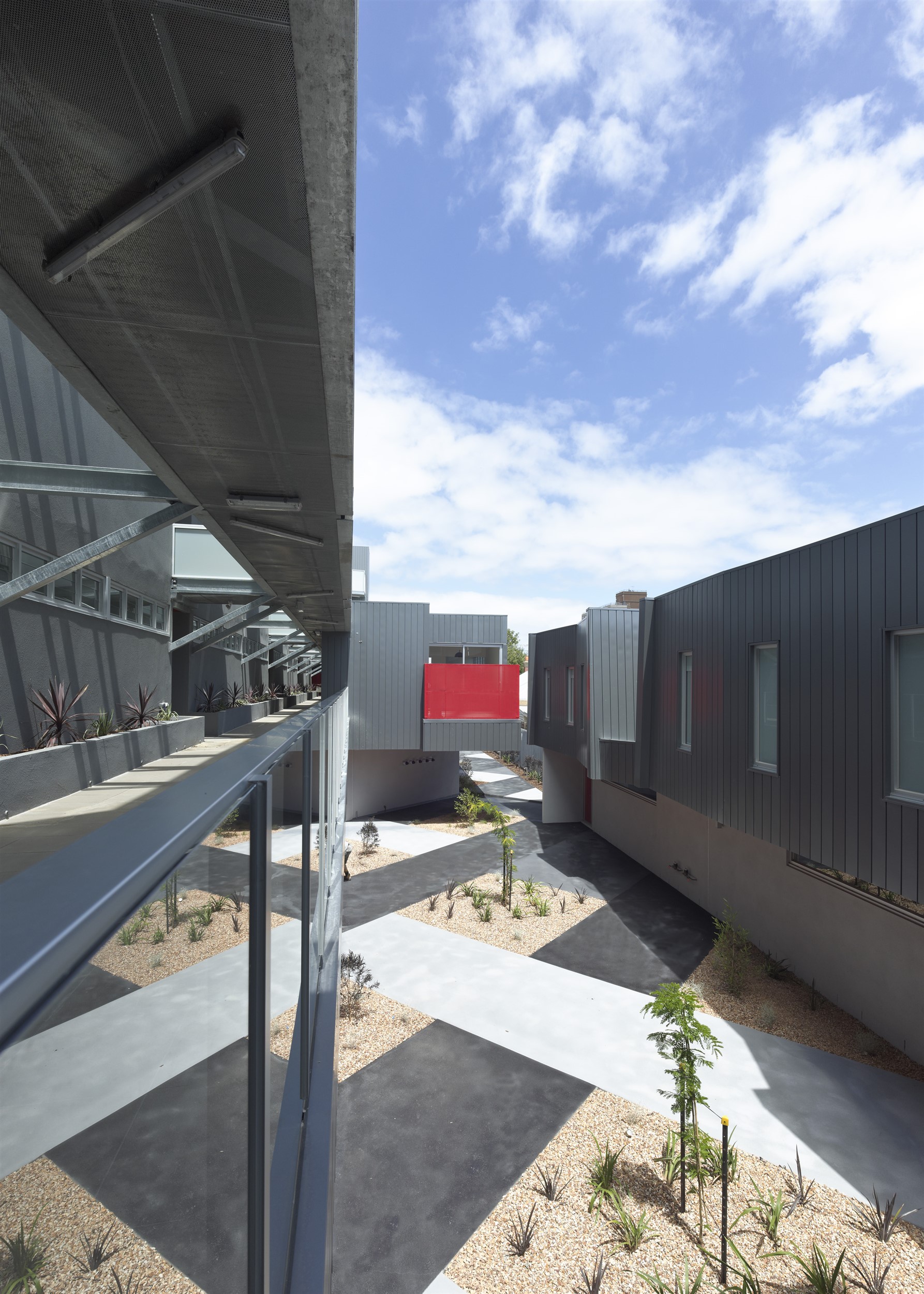
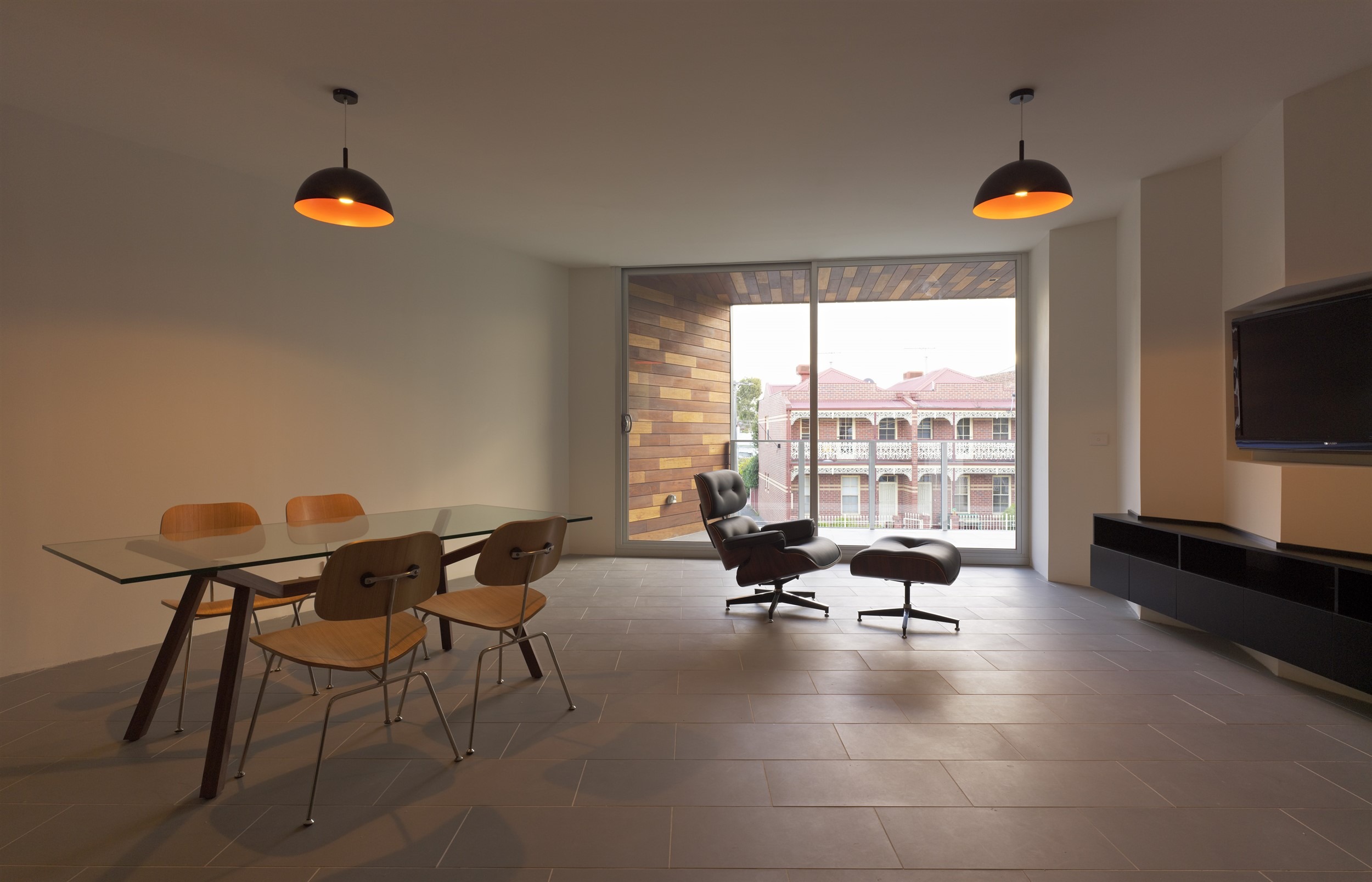
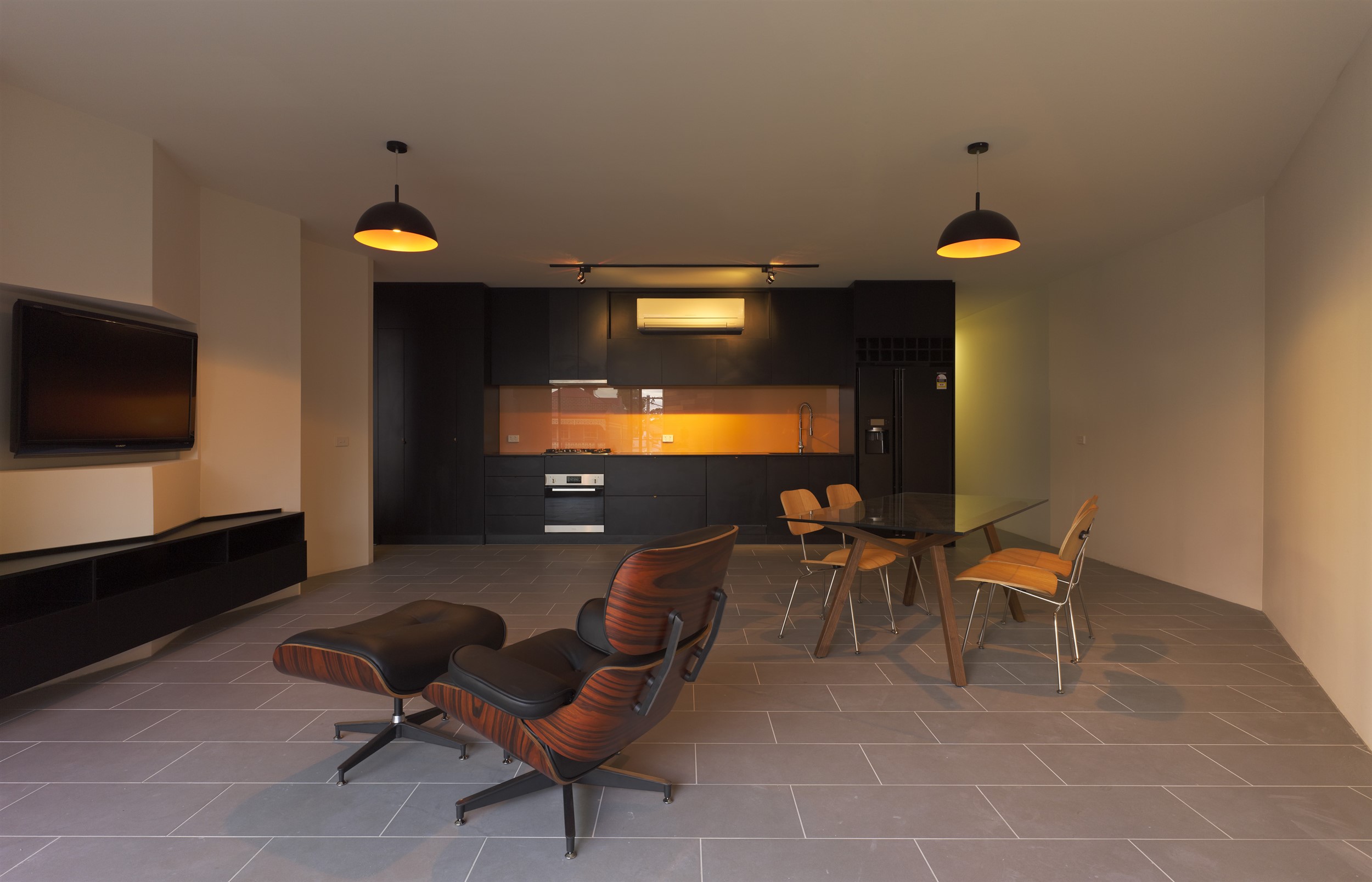
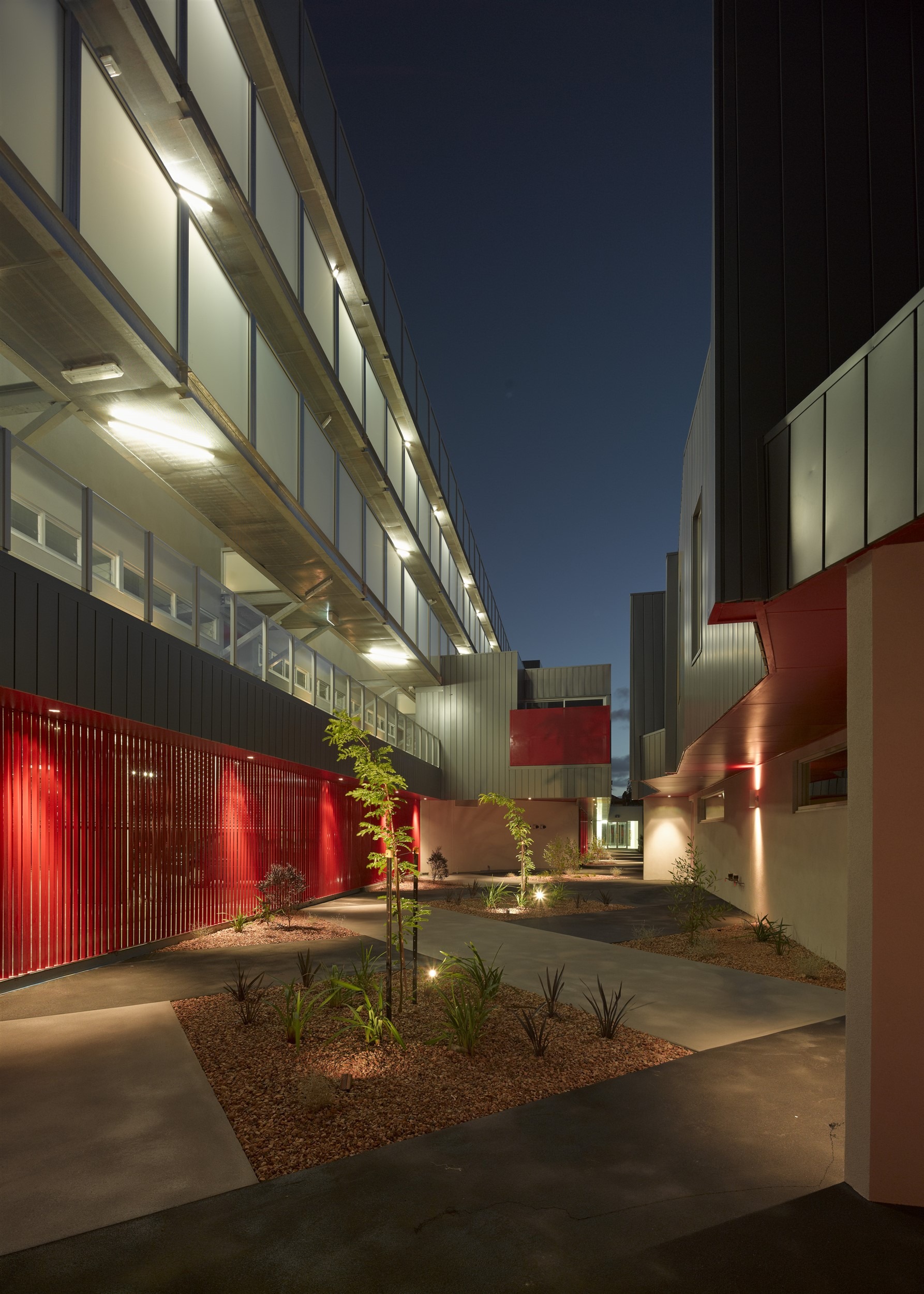
Location
Brunswick,
Victoria
Photographer
Peter ClarkeType
Multi-resBuilder
Keystone Property GroupStatus
Built - 2010Client
Keystone Property Group2011 Emirates Glass LEAF Awards
Shortlisted
2011 Asia Pacific Property Awards
Architecture Multiple Residence Australia
Highly Commended
2011 Victorian Architecture Awards
Shortlisted
The subject site fronts a main street (Union Street) to the south and a private car park that abuts and wraps around the northern and eastern interfaces of the site. The car park services RMIT University and is wedged between the subject site and a railway corridor. And although the car park is a private space it is utilized as a public thoroughfare from the Jewell train station opposite the University and from Dawson Street to the North. As a result, these site conditions provided for a building that is highly visible without any obstruction. This was a site condition that we capitalised on and exploited.
The Jewell project draws on classical design principles which we consider to be not only relevant to contemporary urbanism and architecture, but are design strategies that are essential for good design. The areas of our investigations were, the entry into the building, constructing key and strategic views and the manner in which the building addresses the prominent corners within its context. We incorporated these design strategies to construct a dialogue with the various interfaces which informed our master plan and design process.
Our scheme employs passive and active environmentally sustainable technologies and design strategies that were the foundation to the planning of the building. We incorporated landscaped streets and laneways within the subject site to provide spatial separation between dwellings an enable every habitable space to receive natural light and ventilation. In addition, these separations allow the spaces to be naturally cross ventilated thereby minimising the need for air-conditioning. Low emission lighting complimented with solar panels further reduced the carbon footprint of the complex. We also incorporated a 40,000 litre underground storm water collection tank that is used for toilet flushing.
The rhythmic boxed formed geometries are referential variations of the same architectural language resulting in a sculptured building that evokes a sense of movement. As the building is experienced from the various vantage points, the building form takes on different readings to people in trains, cars, on bicycles or walking pedestrians. This movement is reinforced by the reflective nature of the facades metallic cladding that changes the textural qualities and colour of the building with the varying light and shadows of the day.
The asymmetrical composition of slipping corners that wrap around the northern and southern edges of the building blur the boundaries from the converging facades into a continuous architectural expression. We studied the column motifs of Robert Venturi’s design for the Sainsbury Wing at the Nation Gallery in London and incorporated the manner in which the columns negotiated the corner intersections into our design. The southern elevation has been specifically design with a constructed view of the building typical of the classical order when viewed from Watson Street. Vertical strip windows capture the opposing perspective providing a visual connection and a conclusion to the journey for occupants that have entered the building from Watson Street. The accented double height entry void that interrupts the rhythmic articulation of the composition emphasises and clearly announces the entry into the building as seen from Watson Street.
We used three species of timber to accent elements of the composition in order to establish an immediate dialogue with the juxtaposed buildings that share the same materiality and also to provide a striking contrast between urban and organic materials. These synergies add to the drama and accentuate the sculptured qualities of the building.

Location
Brunswick,
Victoria
Photographer
Peter ClarkeType
Multi-resBuilder
Keystone Property GroupStatus
Built - 2010Client
Keystone Property Group2011 Emirates Glass LEAF Awards
Shortlisted
2011 Asia Pacific Property Awards
Architecture Multiple Residence Australia
Highly Commended
2011 Victorian Architecture Awards
Shortlisted
The subject site fronts a main street (Union Street) to the south and a private car park that abuts and wraps around the northern and eastern interfaces of the site. The car park services RMIT University and is wedged between the subject site and a railway corridor. And although the car park is a private space it is utilized as a public thoroughfare from the Jewell train station opposite the University and from Dawson Street to the North. As a result, these site conditions provided for a building that is highly visible without any obstruction. This was a site condition that we capitalised on and exploited.
The Jewell project draws on classical design principles which we consider to be not only relevant to contemporary urbanism and architecture, but are design strategies that are essential for good design. The areas of our investigations were, the entry into the building, constructing key and strategic views and the manner in which the building addresses the prominent corners within its context. We incorporated these design strategies to construct a dialogue with the various interfaces which informed our master plan and design process.
Our scheme employs passive and active environmentally sustainable technologies and design strategies that were the foundation to the planning of the building. We incorporated landscaped streets and laneways within the subject site to provide spatial separation between dwellings an enable every habitable space to receive natural light and ventilation. In addition, these separations allow the spaces to be naturally cross ventilated thereby minimising the need for air-conditioning. Low emission lighting complimented with solar panels further reduced the carbon footprint of the complex. We also incorporated a 40,000 litre underground storm water collection tank that is used for toilet flushing.
The rhythmic boxed formed geometries are referential variations of the same architectural language resulting in a sculptured building that evokes a sense of movement. As the building is experienced from the various vantage points, the building form takes on different readings to people in trains, cars, on bicycles or walking pedestrians. This movement is reinforced by the reflective nature of the facades metallic cladding that changes the textural qualities and colour of the building with the varying light and shadows of the day.
The asymmetrical composition of slipping corners that wrap around the northern and southern edges of the building blur the boundaries from the converging facades into a continuous architectural expression. We studied the column motifs of Robert Venturi’s design for the Sainsbury Wing at the Nation Gallery in London and incorporated the manner in which the columns negotiated the corner intersections into our design. The southern elevation has been specifically design with a constructed view of the building typical of the classical order when viewed from Watson Street. Vertical strip windows capture the opposing perspective providing a visual connection and a conclusion to the journey for occupants that have entered the building from Watson Street. The accented double height entry void that interrupts the rhythmic articulation of the composition emphasises and clearly announces the entry into the building as seen from Watson Street.
We used three species of timber to accent elements of the composition in order to establish an immediate dialogue with the juxtaposed buildings that share the same materiality and also to provide a striking contrast between urban and organic materials. These synergies add to the drama and accentuate the sculptured qualities of the building.
